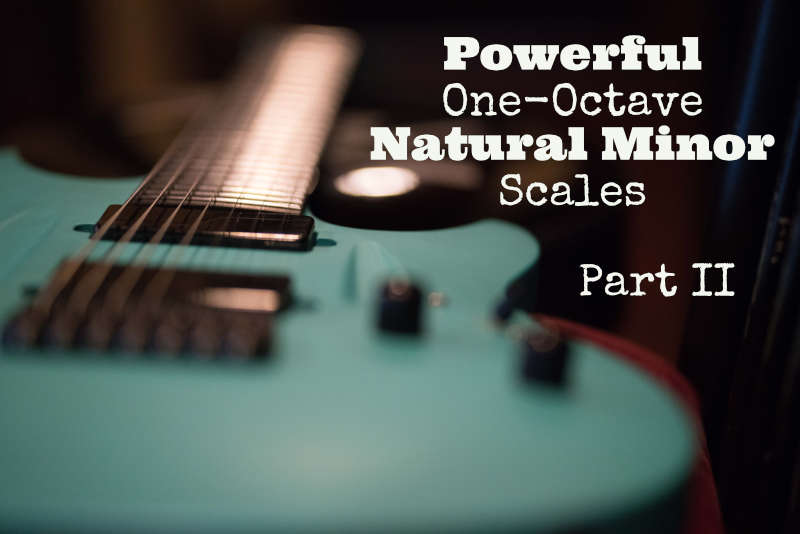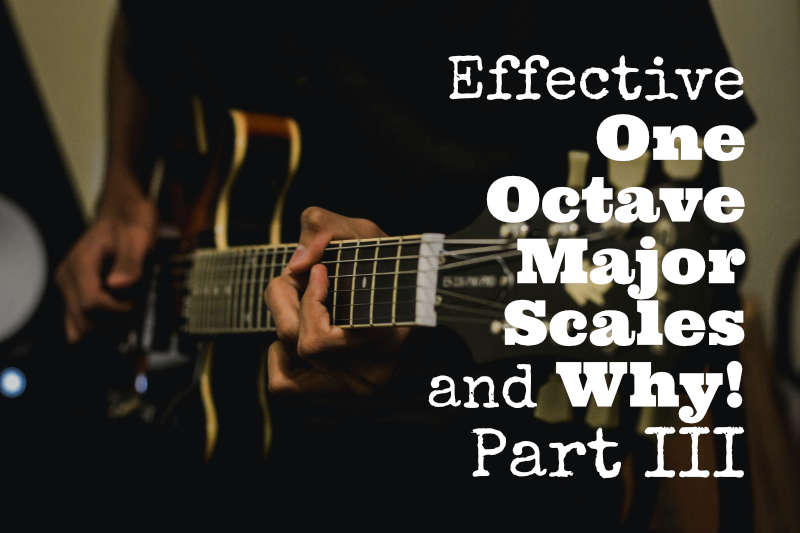
Hi good people, today we’re going to continue our A Natural Minor (One-Octave) Scales Series with Part II. If you haven’t studied Part I yet, be sure to check it out: Powerful One-Octave Natural Minor Scales – Part I
Benefits of Learning One-Octave Natural Minor Scales.
The one-octave natural minor scales are important scales for Rock, Blues and Pop guitar music, soloing and understanding music theory. They are great for identifying the shape and structure of the scale, the notes within the scale and the intervals. They are also easier to play and comprehend for beginners. For intermediate players they expand the way of approaching scales and soloing.
Natural Minor Scales Starting from the Root Note on the A-string
In Part II we are learning three natural minor scale shape/patterns with the first (root) note starting on the A-string (5th string).
Tip: Learn and memorize the notes on the A-string so you can instantly recognize the key of the scale when you want to move the scale up or down the fretboard.
Natural Minor Scale Fingering
I’ve notated the left hand fingering (right hand players) for all the scale shape / patterns below.
The numbers in the yellow neck diagrams indicate the fingers. The neck diagrams also clearly show what the shape or pattern looks like. Visualize and memorize the shape of each pattern.
| 1 = index | 2 = middle finger |3 = ring finger | 4 = pinky |
How to read tablature? Check out How to Read Guitar Tabs – Tablature
Play the scale shapes using alternative picking alternating down and up strokes. The first note you play is a downstroke, the second an upstroke, the third one a downstroke, the fourth one an upstroke and so on.
Practice the scale in every Key
In the examples below we play the A natural minor scale, but the purpose is to learn these scale shapes/patterns in every possible key. Once you got these scale under your fingers learn the pattern in other keys as well. Move the entire scale up or down the fret to change keys easily. Need more help with that? A more detailed explanation on this in Part I
Now let’s get to it.
Enjoy!
NATURAL MINOR SCALE SHAPES – ROOT NOTE STARTING ON THE 5TH STRING
A NATURAL MINOR SCALE fingering / shape / pattern #4






